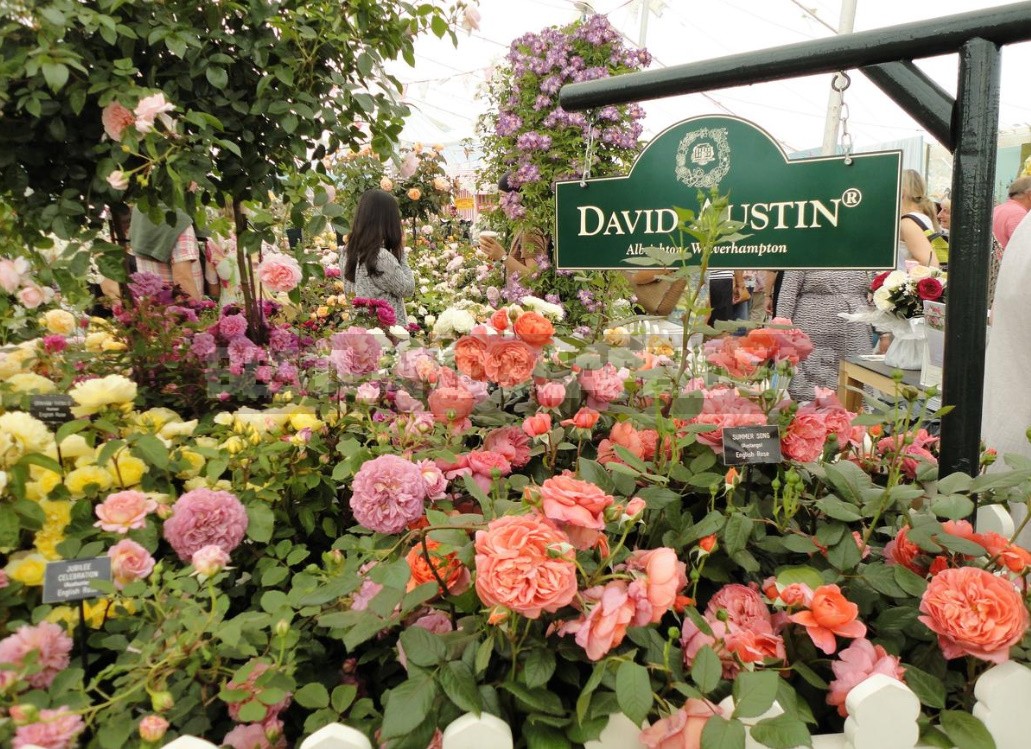
The concept of “English roses” is much broader than their geographical origin and means immeasurably more. In fact, if anyone does not know, this is a whole brand, the appearance of which in the world classification we owe to the British breeder David Austin. When the exhibition in Chelsea (London) in 1983 was presented a collection of amazing beauty of fragrant roses, it became an absolute sensation. Roses, later called English, immediately and unconditionally conquered lovers and connoisseurs of this culture.
Since then, every year the David Austin nursery is sure to present several new varieties, interest in these roses does not weaken, and the number of fans is growing year by year. We also have them. Rose growers have already been convinced of the extraordinary charm of these charming plants, which inherited from their “parents” — ancient species of roses — the composition of the flower and the aroma. They, demonstrating a rare resilience, continue to develop Russian gardens.

The beginning of the history of creating English roses is lost in the mid-50s of the last century, when a young English farmer decided to get varieties that would have the shape of a flower and the aroma of old roses, but would bloom again and be resistant to diseases and cold. Painstaking work on crossbreeding, sampling and variety testing was carried out for several decades. David Austin used many parent forms in his work: hybrids of the ‘Alba’ rose, modern varieties of species hybrids, Gallic, damask, hybrids of the centifolia rose, Portland, tea-hybrid and others, focusing on their best qualities.
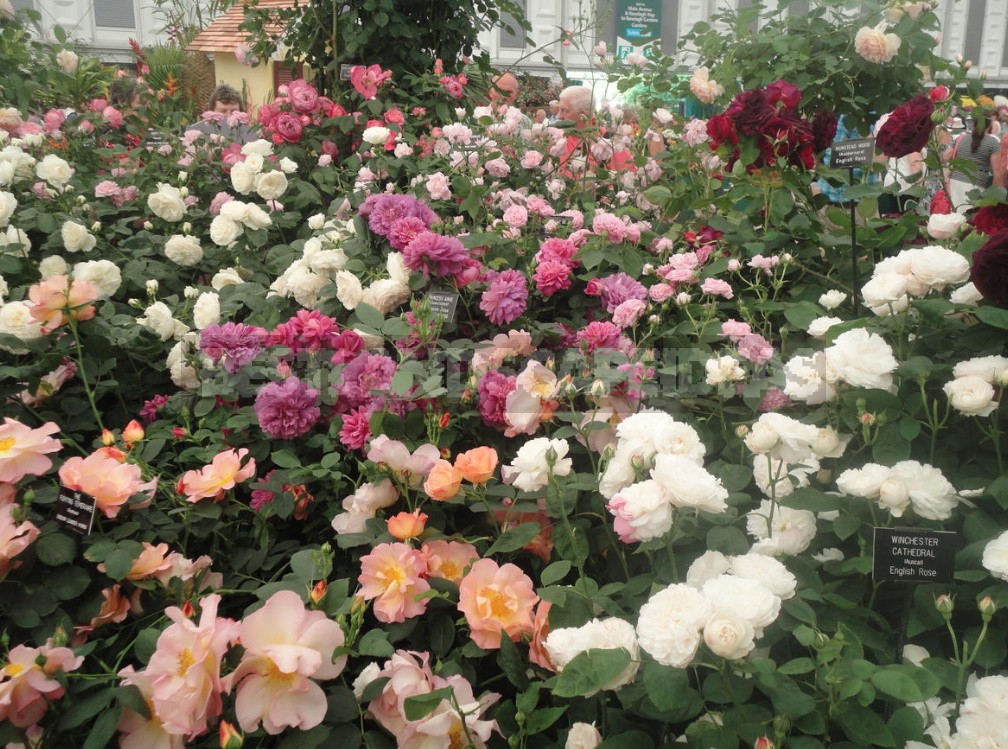
The white species rose was brought to the British Isles by the ancient Romans, and the red rose appeared in the time of the crusaders, apparently from the East and through France got to the Anglo-Saxons. At that time, however, there were only a few varieties of roses to be seen in English gardens. And only in the second half of the XIX century. the British learned about Chinese tea roses, which later became the progenitors of modern tea-hybrid varieties; there were remontant, polyanthous, floribund roses and other groups.
Features of English roses
English roses are primarily famous for the shape of the flower. They look like old Dutch still lifes.
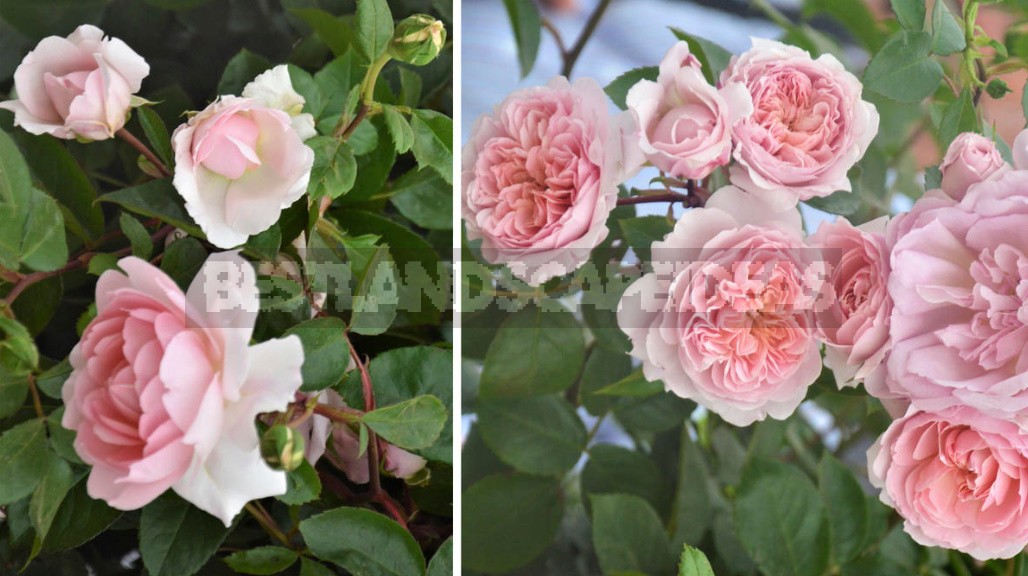
And almost all of them have a wonderful aroma, and each variety has its own, and this distinguishes this class of roses from other brands. They can smell of blossoming almonds or myrrh, lilac, lemon, strawberries, apples or raspberries, have the aroma of pears, citrus, violets and even cucumbers, smell of honey and cloves, white grapes or mulberries. It is known that a professional perfumer works in the nursery, who determines the smell of a new rose, describes its “bouquet”, just as it is done when creating new perfumes.

Most English roses are quite sprawling bushes — so they belong to the group of shrubs. Some can be grown as semi-spun climbers. With good care, they bloom profusely and for a long time, most are able to give a second wave of flowering. English roses are quite winter-hardy. Many have flexible, well-bent shoots: they are easy to put in a shelter that provides reliable wintering in our difficult climate.
Tips for buying and planting
English roses appeared in our country not so long ago. Their behavior and hardiness in our gardens have not yet been fully studied. I can’t complain about the ones that grow on me. They winter well and delight with abundant flowering, but require a lot of sun. To be honest, if I were to start working on roses again, I would plant the entire garden exclusively English roses, they are so good and fragrant! And-give the garden a touch of antiquity.
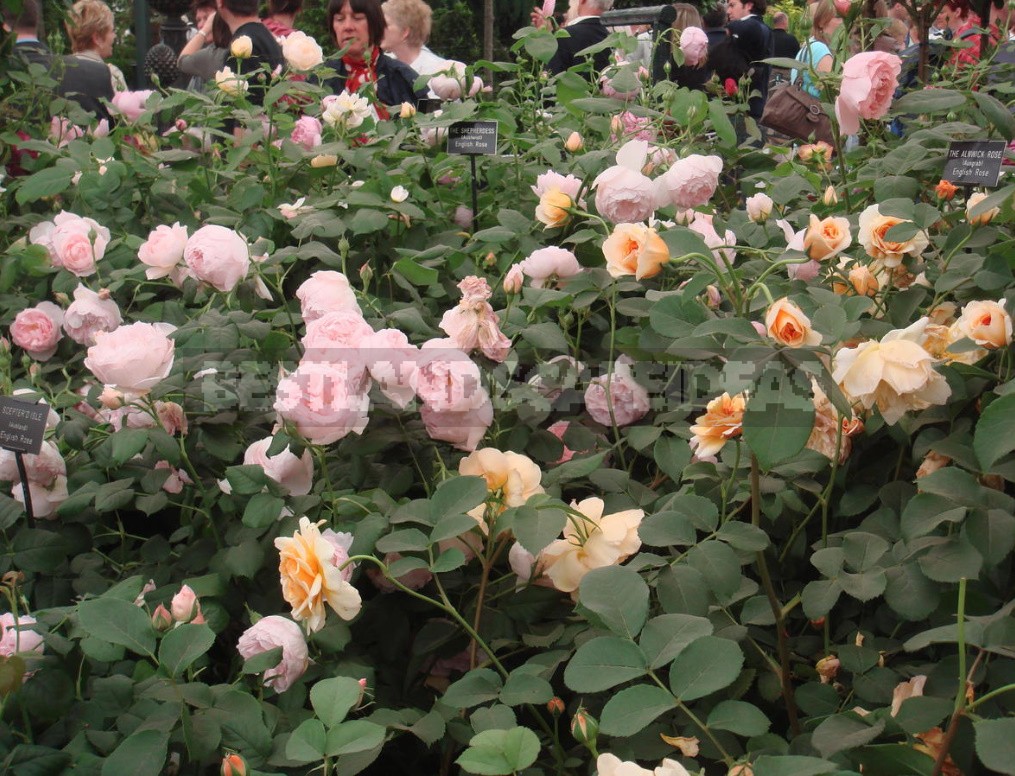
When purchasing seedlings, it is better to give preference to branded ones in green boxes: the nursery values its reputation, they are of very high quality, and there is no re-sorting. On sale in the summer, these roses can be found in a blooming state already in pots. This is generally a win-win, although it will cost you more. But to plant such a plant in the garden (already two years old!) it is possible without problems at any time — one hundred percent survival rate. Do not forget to just keep in the shade for the first time and ensure frequent watering. So the cost will pay off completely.
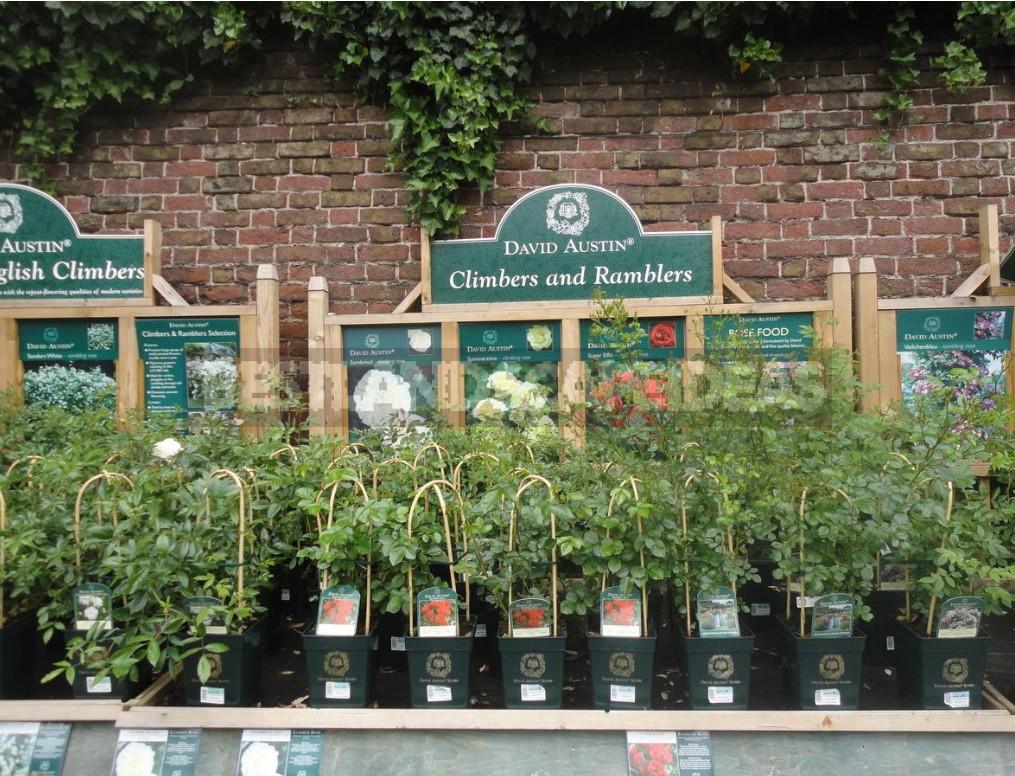
White varieties are best planted in partial shade, otherwise they quickly shed their petals. And dark — it is preferable to place in those places of the garden where they will not be burned by the bright midday sun. Since the flexible stems do not hold the heavy flowers well, they look down. To enjoy the full bloom, you need to choose high (!) varieties, there are many of them, it’s up to you.
It should be borne in mind that English rose bushes are usually very spreading and require a lot of space. And if you follow the advice of David Austin-plant 3 bushes together at once-you will need a lot of space. So when buying, be sure to pay attention to the declared dimensions of the plant, its height and width.
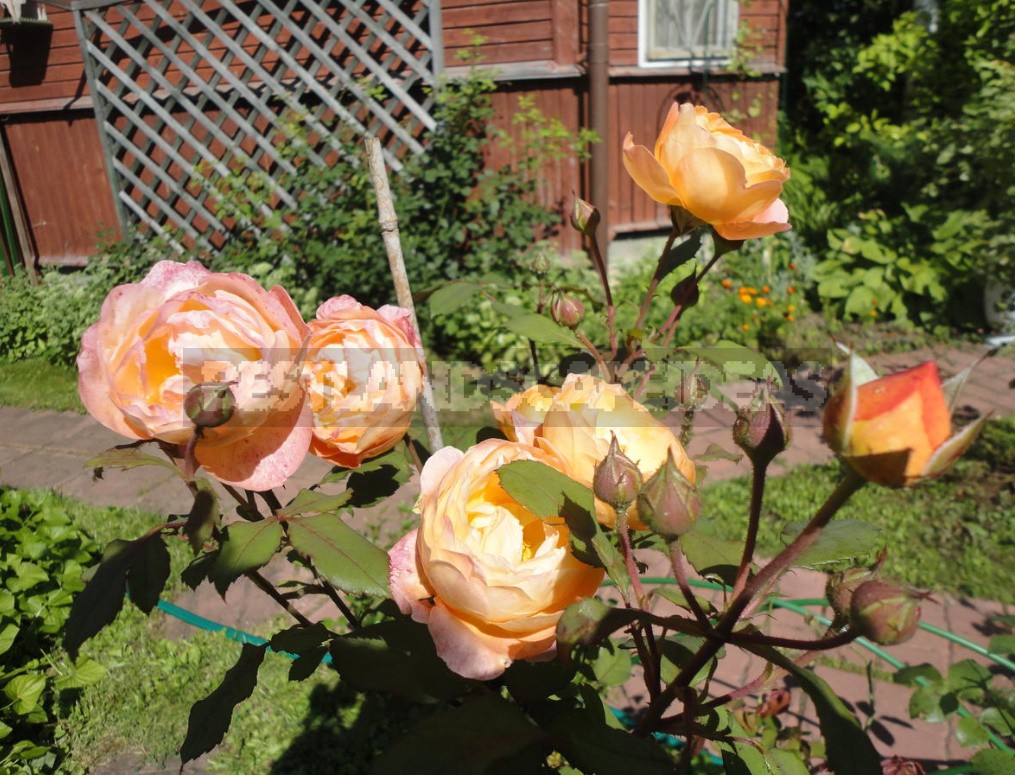
I have several such roses in my garden after the rosary was formed. After a few years, it became clear that English beauties should be placed separately: they do not combine well with other varieties.
The modern assortment of English roses allows you to create compositions of any color shades, and the wonderful, simply divine aroma of any of them will not leave anyone indifferent. So, if you are at the beginning of the road, give preference to English roses, especially since there are no special tricks in caring for them.
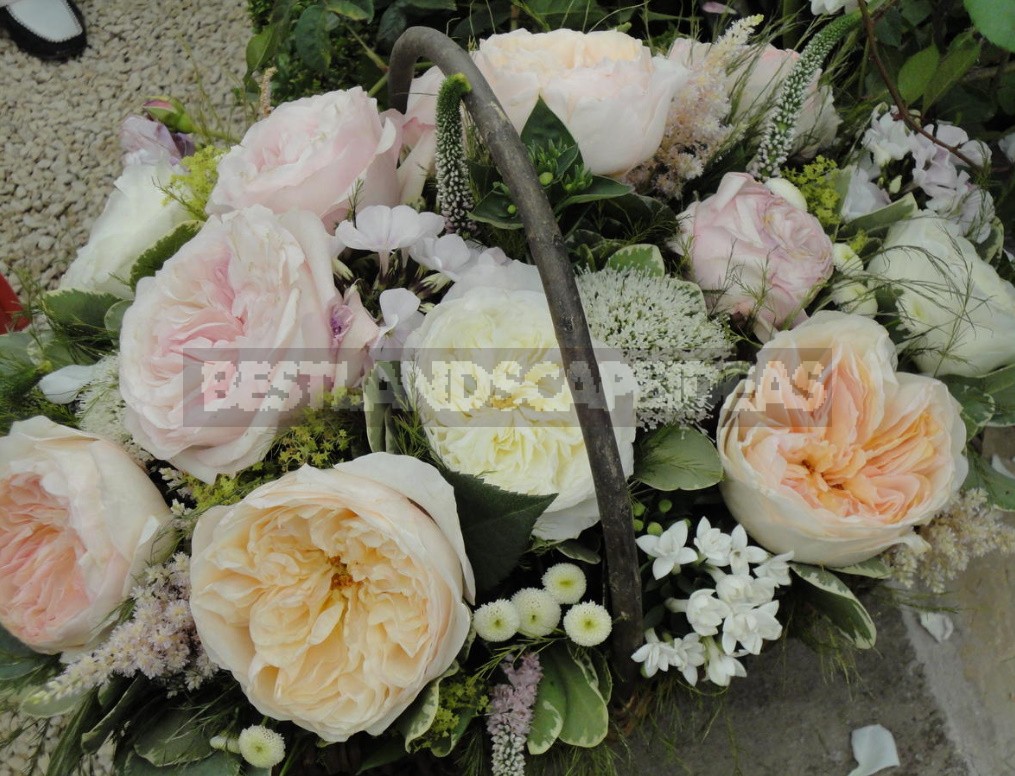
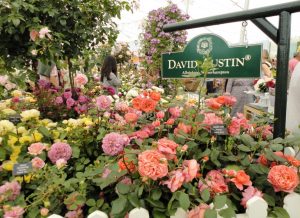


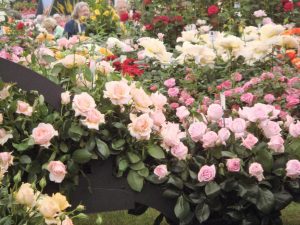
Leave a Reply